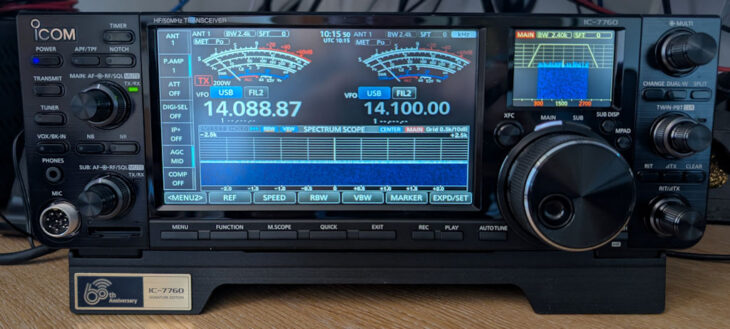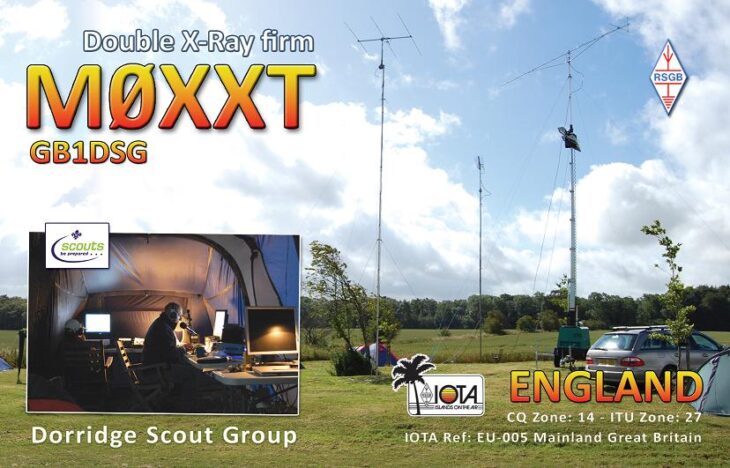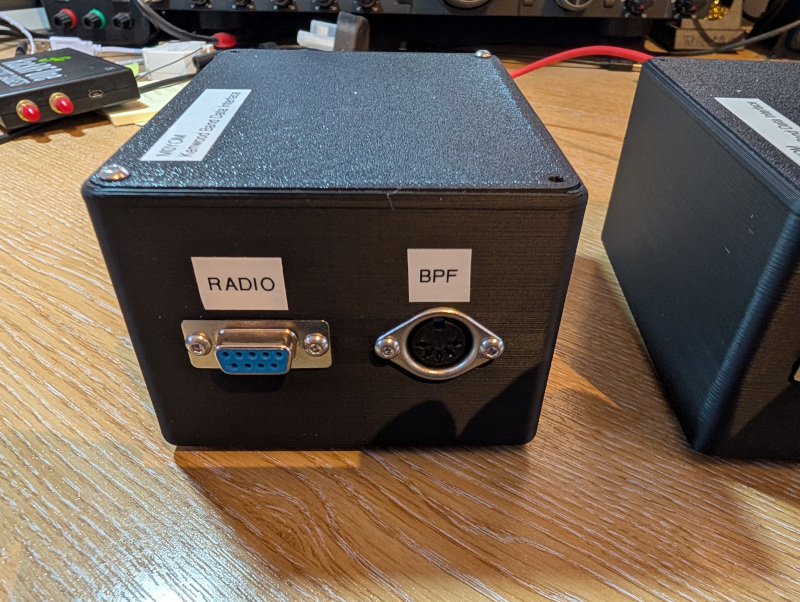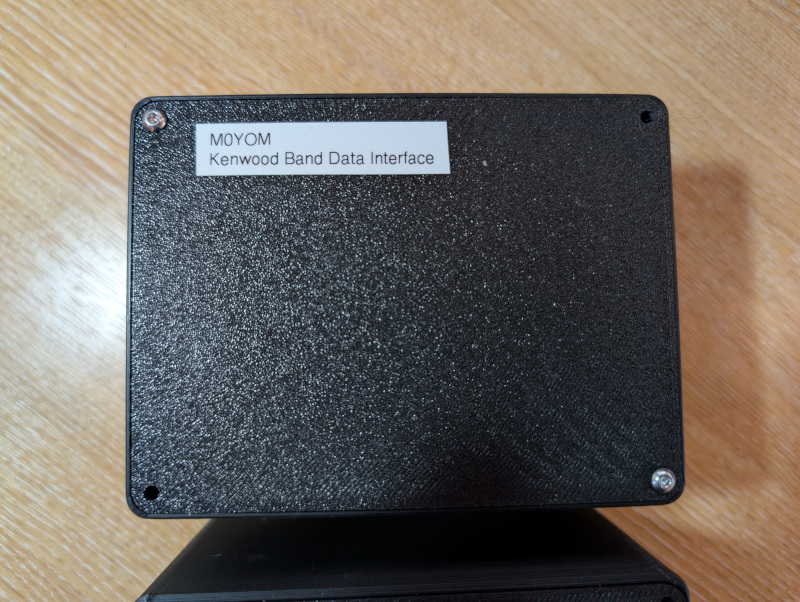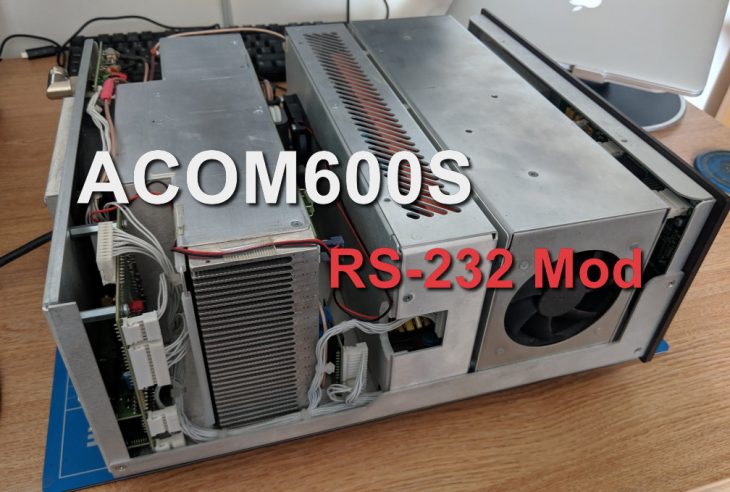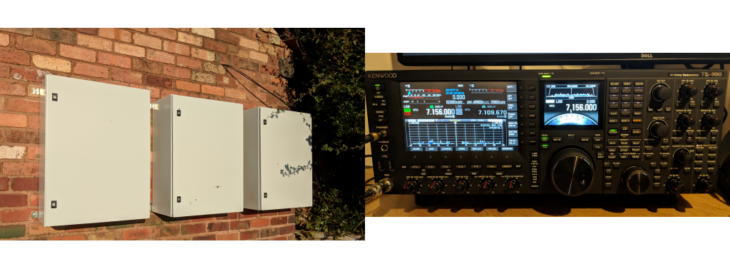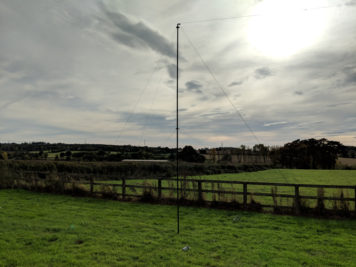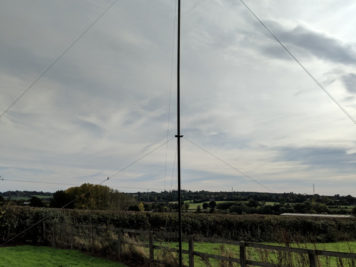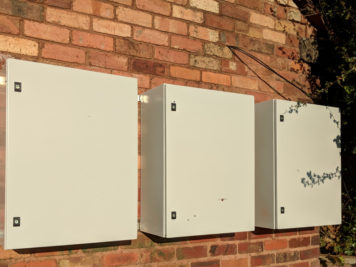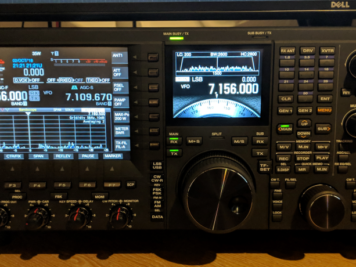I’ve now started a YouTube channel where I intend to post plenty of hopefully enjoyable and informative content on my amateur radio activities. The first video covering the unboxing of my new ICOM IC-7760SE is now live. So if you enjoy amateur radio YouTube content, have a watch of the video and subscribe to the channel. There’s plenty more to come.
Author - M0YOM
The Kenwood TS-990S has been the main HF rig in the M0YOM shack for quite a few years now and it’s been a fantastic bit of equipment however there are some really exciting new rigs about now and for my use the new ICOM IC-7760 is a much better fit. My old TS-990S has now gone to a fantastic new home with Callum M0MCX in the DX Commander Shack where it’ll join his existing TS-990 as a second station.
Luckily ML&S had one of the very limited edition IC-7760SE Signature Editions in stock so I was very pleased to be able to get one of these as I believe there are only 200 world wide with just 20 destined for the UK market. I’m excited to get to know the new rig and see what it’s capable of. It also pairs really nicely with my ICOM IC-9700 which is my main VHF & UHF rig.
ACOM Director Plus 0.7.5 (beta) is now available
Please note that the .NET Framework 4.6 is now required
Work has recently restarted on ACOM Director Plus. See below for the full list of changes however please note that whilst ACOM2000A support will be added and is being actively worked on, it is currently disabled in this release as it isn’t currently working.
This release should support the ACOM500S, ACOM600S, ACOM700S, ACOM1200S, ACOM1400S and ACOM2020S however at the time of release only the ACOM600S and ACOM1200S (thanks to Alex YO9HP for testing) are confirmed to be working as expected.
Everyone’s feedback is very welcome, especially if you have one of the other models and can confirm if it’s functioning correctly or not.
Changes in this version are:
- ADDED: Hover over effect on modern style buttons
- ADDED: Classic control panels (Turned off in this release though)
- ADDED: Remote Power On Capability, must be enabled in the configuration options
- ADDED: Ability to see ACOM600S Amplifier information, i.e. Firmware Version, Serial No. Etc.
- ADDED: Ability to see ACOM1200S Amplifier information, i.e. Firmware Version, Serial No. Etc.
- ADDED: Preliminary ACOM2000A Support (Disabled in this release)
- ADDED: ACOM2000A Now shows antenna number and USR/DEF setting
- ADDED: Now autodetects if the ACOM2000A is already in measuring mode
- ADDED: Ability to see ACOM2000A Amplifier information, i.e. Firmware Version, Serial No. Etc.
- ADDED: New Tiny Layout
- ADDED: Initial Support for ACOM500S, ACOM700S, ACOM1400S, ACOM2020S
- ADDED: Auto Detection of ACOM Model (untested in this release)
- CHANGED: Upgraded to .NET Framework 4.6
- ADDED: Option for Peak Hold on Meters
- ADDED: Solid Bar Meter Option
I used to be part of the M0XXT “Double X-Ray Firm” Radio Club and Contest team along with Callum M0MCX, Tim M0URX and occasionally Barry M0DGQ and Terry G4MKP.
The website we used to run is no longer working so I decided to re-create many of the posts here for posterity.
As some readers of my site will be aware Callum M0MCX also known as DX Commander is a good friend of mine (Go check out his excellent antenna’s here and YouTube channel here) and a little while back the 5B4AGN Band Pass filters I constructed were donated to the DX Commander shack on permanent loan in order to help tackle interference issues between his two stations. By all accounts they are working very well, however they were designed to interface with a Yaesu rig using it’s BCD based band data port and as Callum runs Kenwood radios they’re having to be used in manual mode.
With that in mind I decided to make him a couple of boxes to allow the filters to interface with his Kenwood radios enabling them to be used in a fully automated manner.
Check out the full write up of this project here
You’ll have noticed that updates to the site have been none existent for a good few years now. As I’m sure happens with a lot of people Work, family and life in general gets in the way of hobbies and to say that’s been the case for me in recent years would be an understatement.
If you’ve emailed me or sent me a message through the this site, my apologies for not responding, my focus has had to be on other things for quite some time now.
That being said, I’m back now and whilst the M0YOM station has been off air for a while I’m going to be rebuilding it all with lots of exciting changes which I’ll document here for anyone who might be interested.
Finally for anyone who is wondering about the ACOM Director project, it’s not dead but has also been on hold. All being well I intend to get it updated with lots of fixes and enhancements later this year. I’ll also do my best to respond to the requests I’ve been getting.
I have been attempting to get the remote power on capability of ACOM Director Plus working with the ACOM 600S however no matter what I tried I was unable to make it work. I tried swapping to a null modem cable and amazingly the remote power on worked perfectly, however I could no longer connect to the amp from the computer.
On closer inspection of the manual, it would appear that there is something unusual about the wiring for the RS-232 port
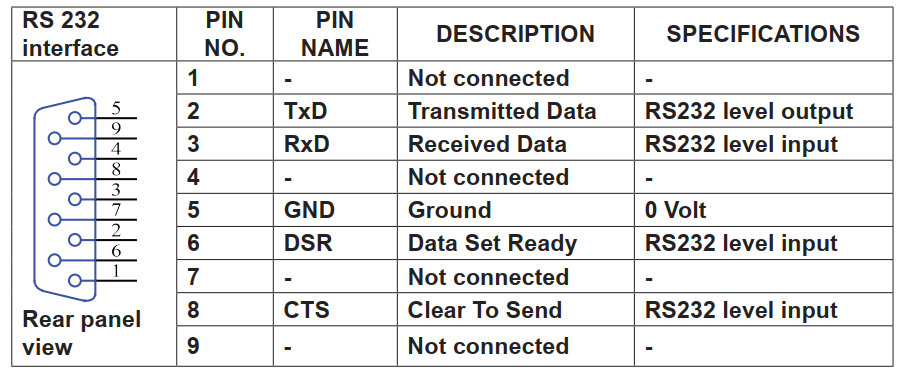
At first glance everything seems fine, however pins 2 & 3 (TxD and RxD) are wired to use a straight through RS-232 cable, but pins 6 & 8 (DSR and CTS used for remote power on) are wired to use a null modem cable. This means that for full control of the amp a custom cable must be used.
What peaked my interest is the fact that pins 4 & 7 are noted as Not Connected, these are the DTR and RTS lines and are what’s used to tell the amp to power on. In order for this to work they must be connected to pins 6 and 8. It occured to me that it should be possible to make a modification to the amp to enable it to support a regular straight through RS-232 cable.
To that end i’ve put together a mod which can be found over at ACOM 600S RS-232 RPON Mod which details how to do this. It’s only useful if you intend to use the RPON capability through the RS-232 port, however it will avoid the need for custom cables and is still backward compatible should a custom cable happen to be used in the future.
IMPORTANT – YOU SHOULD NOT ATTEMPT THIS MODIFICATION UNLESS YOU ARE CERTAIN YOU HAVE THE SKILLS AND EQUIPMENT REQUIRED, YOU COULD DAMAGE YOUR AMPLIFIER. THIS MODIFICATION IS NOT ENDORSED BY ACOM. NO RESPONSIBILITY IS TAKEN BY M0YOM, ACOM OR ANYONE ELSE FOR ANY DAMAGE OR INJURY THAT MAY RESULT FROM PERFORMING THIS MODIFICATION. PERFORMING THIS MODIFICATION WILL LIKELY VOID YOUR WARRANTY.
While working on the next update to ACOM Director Plus (yes, work is now continuing on it), I couldn’t figure out why my code to turn on the ACOM600S was not working. I’d previously put this down to the fact that I have an early model and perhaps this wasn’t implemented then. I resorted to using my scope to check that the DTR and RTS lines were in fact being activated properly which is when I discovered that my Null Modem cable i’d been using for years now is not in fact a proper Null Modem Cable.
A normal (proper) Null Modem cable has the following wiring, notice the crossover of the DTR & DSR pins and the RTS & CTS pins, these are used for the remote power on of the ACOM600S, ACOM1200S and ACOM2000A with the RPON Module.

However after checking the wiring on my (commercially purchased) Null Modem Cable, I found it is actually wired like this.
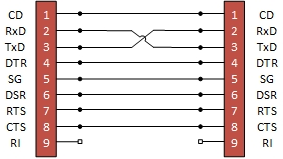
As pins 2 & 3 are crossed, it still works fine for normal serial communications (without handshaking obviously) however all other pins are straight through, so anything relying on the proper use of handshake signals will fail.
The moral of the story, if you have issues with remote power on of the ACOM600S, ACOM1200S or ACOM2000A (or anything else that makes use of any control pins), make sure your Null Modem cable is actually wired fully to the Null Modem standard and not a half baked cable like mine.
Following feedback from ACOM regarding the remote power on using the RPON module for the ACOM2000A, two new versions of ACOM Director have now been released.
Version 0.7.2 is now available for anyone who was previously using 0.7.1 and does not want to use the experimental 0.8.x releases
Version 0.8.1 is now available for anyone who was previously using 0.8.0
These contain the following changes
- Renamed to ACOM Director Classic as this is now the legacy version
- Increased the RTS+DTR impulse time from 3 seconds to 10 seconds when attempting to remote power on the ACOM2000A
The increased impulse length from 3 to 10 seconds for remote power on is due to the power on failing on many occasions because the 1000uF electrolytic capacitor in the RPON adapter input does not get charged to the required voltage level. The most likely reason for this is the more recent USB to RS232 converters not properly meeting the RS232 standards.
These versions can be downloaded from the following locations
With regards to ACOM Director Plus, work had stopped for a while due to some extremely time consuming work comittments, these should be coming to an end soon however they have prevented me from furthering the progress of this. They’ve also meant i’ve not been able to monitor my radio related email very often, so if I haven’t responded to you, my apologies, I should be in a position to catch up very soon.
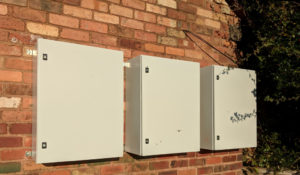 The last few weeks have seen some good progress on getting the new station built, the external cabinets have now been installed, these are Schneider Electric Spacial CRN cabinets and measure 600mm x 800mm x 300mm. From left to right they’ll be used for 240v Mains Electric, control equipment (more on this in a future posting) and RF Switching. These are great cabinets as they’re relativly inexpensive and are IP66 rated so provide good weather proofing for the equipment. My location is very exposed to the weather so this is an important consideration.
The last few weeks have seen some good progress on getting the new station built, the external cabinets have now been installed, these are Schneider Electric Spacial CRN cabinets and measure 600mm x 800mm x 300mm. From left to right they’ll be used for 240v Mains Electric, control equipment (more on this in a future posting) and RF Switching. These are great cabinets as they’re relativly inexpensive and are IP66 rated so provide good weather proofing for the equipment. My location is very exposed to the weather so this is an important consideration.
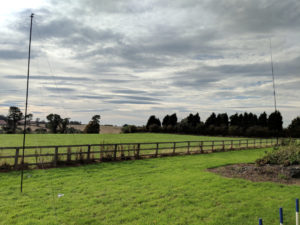 With CQWW SSB coming up I wanted to be able to get on 80m, so figured it was time to convert the DX Commander into an 80m capable antenna. The 17m element was removed and replaced with an 80m inverted L element, with hindsight I should probably have removed the 30m element but i’ll address this once I move the DX Commander to it’s permanent location. The end of the inverted L is supported from a Clansman 5.4m Mast i’ve had laying around for years. The 80m performance seems to be pretty good and will certainly do as a temporary solution for 80m.
With CQWW SSB coming up I wanted to be able to get on 80m, so figured it was time to convert the DX Commander into an 80m capable antenna. The 17m element was removed and replaced with an 80m inverted L element, with hindsight I should probably have removed the 30m element but i’ll address this once I move the DX Commander to it’s permanent location. The end of the inverted L is supported from a Clansman 5.4m Mast i’ve had laying around for years. The 80m performance seems to be pretty good and will certainly do as a temporary solution for 80m.
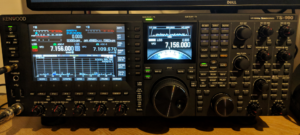 Finally, and perhaps the most exciting change is the new HF rig, i’ve had my trusty Yaesu FT-2000 for a very long time and the opportunity came up for me to acquire a Kenwood TS-990S. The descision was a very easy one so the FT-2000 had to go. I’ve only had the TS-990S for a short time but so far i’m very pleased with it. The performance is considerably better than the FT-2000 and it’s a fantastic rig to operate. I’m very much looking forward to putting it through it’s paces in CQWW SSB.
Finally, and perhaps the most exciting change is the new HF rig, i’ve had my trusty Yaesu FT-2000 for a very long time and the opportunity came up for me to acquire a Kenwood TS-990S. The descision was a very easy one so the FT-2000 had to go. I’ve only had the TS-990S for a short time but so far i’m very pleased with it. The performance is considerably better than the FT-2000 and it’s a fantastic rig to operate. I’m very much looking forward to putting it through it’s paces in CQWW SSB.

